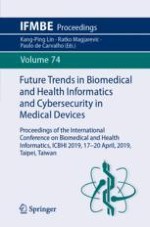2020 | OriginalPaper | Chapter
Deep Learning Method to Detect Plaques in IVOCT Images
Authors : Grigorios-Aris Cheimariotis, Maria Riga, Konstantinos Toutouzas, Dimitris Tousoulis, Aggelos Katsaggelos, Nikolaos Maglaveras
Published in: Future Trends in Biomedical and Health Informatics and Cybersecurity in Medical Devices
Publisher: Springer International Publishing
Activate our intelligent search to find suitable subject content or patents.
Select sections of text to find matching patents with Artificial Intelligence. powered by
Select sections of text to find additional relevant content using AI-assisted search. powered by
